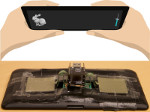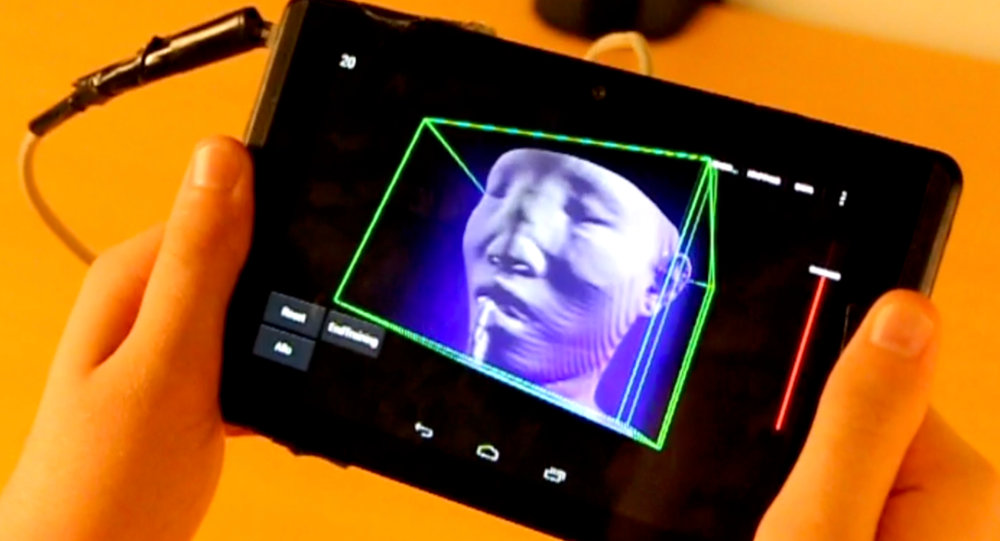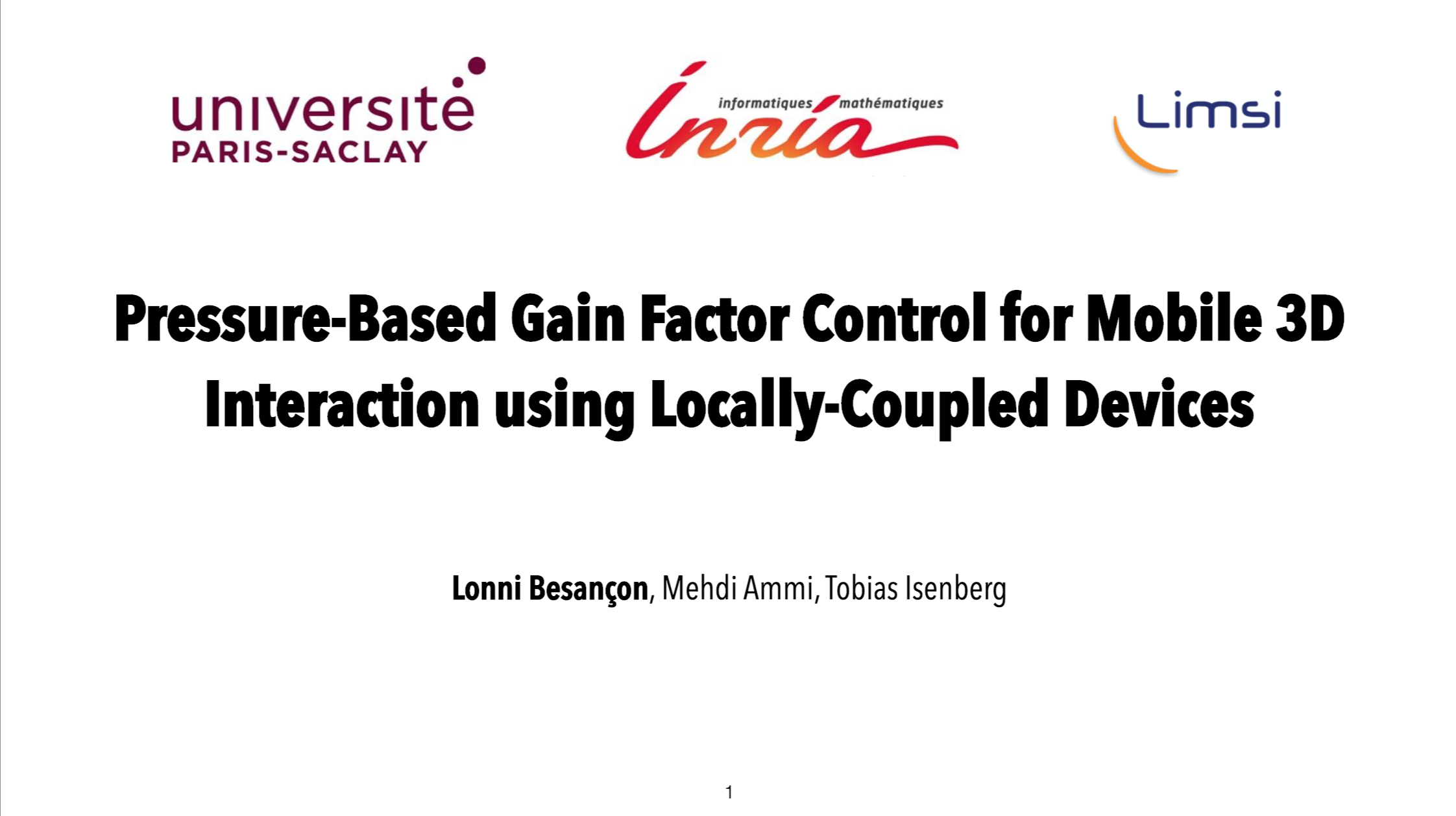Pressure-Based Gain Factor Control for Mobile 3D Interaction using Locally-Coupled Devices
Lonni Besançon, Mehdi Ammi, and Tobias Isenberg.
We present the design and evaluation of pressure-based interactive control of 3D navigation precision. Specifically, we examine the control of gain factors in tangible 3D interactions using locally-coupled mobile devices. By focusing on pressure as a separate input channel we can adjust gain factors independently from other input modalities used in 3D navigation, in particular for the exploration of 3D visualisations. We present two experiments. First, we determined that people strongly preferred higher pressures to be mapped to higher gain factors. Using this mapping, we compared pressure with rate control, velocity control, and slider-based control in a second study. Our results show that pressure-based gain control allows people to be more precise in the same amount of time compared to established input modalities. Pressure-based control was also clearly preferred by our participants. In summary, we demonstrate that pressure facilitates effective and efficient precision control for mobile 3D navigation.
Award
Best Paper Honorable Mention Award at ACM CHI 2017
Video Demo CHI2017 (4m45s)
Video Preview CHI2017 (30s)
Paper CHI2017
Lonni Besançon, Mehdi Ammi, and Tobias Isenberg (2017) Pressure-Based Gain Factor Control for Mobile 3D Interaction using Locally-Coupled Devices. ' In Juan Pablo Hourcade, Daniel Wigdor, and Caroline Appert, eds., Proceedings of the Annual Conference on Human Factors in Computing Systems (CHI, May 6–11, Denver, CO, USA). New York. ACM, pages 1831–1842, 2017. [pdf]
Slides for CHI2017 Presentation
[Slides for CHI2017 Presentation]
More Information
[HAL-Inria]
[Project page @Lonni Besancon]
[Project page @Tobias Isenberg]


